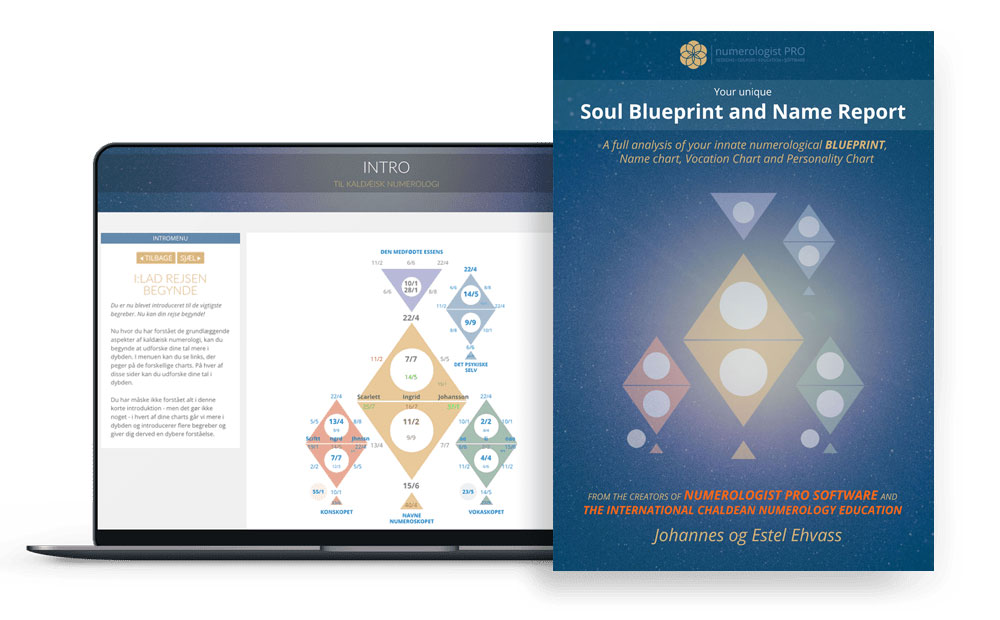Sassanian Astrology

Johannes Ehvass
Welcome, dear reader! Together, we embark on a captivating journey into astrology, a timeless art and science that has accompanied humanity since its earliest days. Each astrological discovery not only mirrors the era and culture it emerged from but also feels like a celestial gift, as if the universe is directly speaking to us. Through these articles, I share with you the profound journey of how astrology has grown and evolved alongside us. Let's explore this cosmic connection that has, for millennia, enriched our understanding of ourselves and the universe around us.
Sassanian Astrology: Synthesis and Transmission of Celestial Knowledge

The Sassanian Empire (224–651 CE) stands as one of the most influential epochs in the annals of astrological history.
During their rule, the Persians not only inherited the rich tapestry of astrological thought from previous eras, but they also made lasting contributions by synthesizing diverse traditions, which they then passed on to the Islamic world.
The Landscape of Sassanian Persia
Established by Ardashir I after overthrowing the Parthian Empire, the Sassanian realm, at its zenith, stretched from the Roman-Byzantine frontiers in the west to the borders of India and China in the east. This geographical expanse put them at a crossroads of intellectual currents.
Religious Renaissance: With the rise of the Sassanians came the resurgence of Zoroastrianism. As the state religion, it imbued every aspect of life, including astrology, with its dualistic cosmology and mythological motifs. The priesthood, known as the Magi, held significant sway both religiously and politically.
Centers of Learning: Cities like Ctesiphon, the empire’s capital, became hubs of intellectual pursuits. Scholars, drawn from various parts of the empire and beyond, gathered, translating works, debating ideas, and producing original content.
Synthesis of Astrological Traditions
The true genius of Sassanian astrology lay in its ability to amalgamate various traditions into a cohesive system.
Babylonian Legacy: The omen-based astrology of the Mesopotamians, with its emphasis on the significance of celestial events as portents, continued to influence Sassanian practices. The elaborate methods of lunar and planetary observations, passed down from the Babylonians, provided the empirical backbone.
Hellenistic Fusion: The horoscopic astrology of the Hellenistic world, replete with its zodiacal signs, houses, and aspects, found eager adopters in the Sassanian realm. The technical sophistication and the philosophical underpinnings of Hellenistic astrology made it an invaluable addition.
Indian Influx: With trade and cultural exchanges occurring along the Silk Road and other routes, Indian astrological concepts, especially the nakshatras (lunar mansions), made their way into Sassanian practices. This is evident in some Zoroastrian texts that list nakshatras, suggesting a clear cross-pollination of ideas.
Textual Legacies and Key Figures
While much of Sassanian astrological literature has been lost, references in later Islamic sources provide insights.
Zīj: One of the most notable contributions was the development of the Zīj, astronomical and astrological handbooks. These texts, often tables, provided data for astrological computations. The most famous, the Zīj-i Shahryārān, is attributed to the Sassanian king Khosrow I.
Notable Figures: Zarādusht, often identified with Zoroaster but likely a separate individual, is credited with penning astrological texts. Another figure, Nawbakht the astrologer, and his family played pivotal roles in astrological and calendrical reforms.
Transmission to the Islamic World
The conquest of the Sassanian Empire by the expanding Islamic Caliphate in the 7th century CE didn’t spell the end of Sassanian astrological wisdom. Instead, it marked a new phase of preservation and propagation.
Translation Movements: The Abbasid Caliphate, particularly under rulers like Al-Ma’mun, sponsored massive translation efforts in Baghdad’s House of Wisdom. Sassanian works, alongside Greek and Indian texts, were translated into Arabic.
Influence on Islamic Astrology: The foundational knowledge of the Sassanians played a key role in shaping early Islamic astrology. Figures like Al-Biruni and Al-Tabari drew heavily from Sassanian sources.
Continuity of the Magi: Many Zoroastrian priests, the Magi, integrated into the Islamic administrative machinery. Their expertise was invaluable, especially in courtly settings.
Sassanian Contributions to Astrology
The Sassanian contributions to astrology were significant, integrating previous knowledge from Babylonian, Hellenistic, and Indian traditions, and further influencing Islamic and European astrological practices. Here are some key contributions from the Sassanian period to the field of astrology:
- Compilation and Expansion of Astrological Texts:
- The Sassanians were known for gathering and translating important astrological works from different cultures, especially Greek and Indian sources. This helped in preserving and synthesizing a wide array of astrological knowledge.
- Development of the ‘Zij’ Astronomical Tables:
- The Sassanian astronomers compiled extensive sets of astronomical tables called Zijes. These tables included mathematical techniques for calculating celestial events like the positions of planets, solar and lunar eclipses, and the lunar crescent’s visibility. They were fundamental for both astronomical and astrological calculations.
- Advancements in Astrological Techniques:
- They refined and expanded upon the use of planetary periods, also known as Firdaria, an astrological technique that assigns periods of life to the influence of specific planets, which likely had its roots in earlier Hellenistic astrology but found a particular form in the Sassanian context.
- Royal Astrology:
- Sassanian kings had court astrologers who played vital roles in governance. These astrologers would choose auspicious times for significant events, interpret omens, and make predictions concerning the empire and its rulers.
- Astrological Iconography:
- The Sassanians also contributed to astrological iconography, with zodiacal signs and planetary symbols often found in art and architecture, indicating the high status of astrology in cultural life.
- Integration and Influence:
- Sassanian astrological practices had a lasting impact on the development of Islamic astrology, as many of their works were translated into Arabic. Through these translations, Sassanian astrological traditions were disseminated into the broader Islamic world and later into medieval Europe.
- Astrological Texts and Authors:
- Although specific texts and authors are not as well-known as in the Greek and Roman periods, there is evidence that a number of important astrological texts were written during the Sassanian period, which influenced later astrological thought.
- Educational Institutions:
- The academy at Gundishapur, for example, was an intellectual center where Greek, Persian, and Indian knowledge, including astrology, was taught and further developed.
The fall of the Sassanian Empire to the Islamic Caliphate led to the integration of their astrological knowledge into Islamic science. Thus, the Sassanian contributions provided a crucial bridge between the classical world’s astrology and the emerging practices in the Islamic and later medieval European worlds.
Conclusion
The Sassanian period, while marked by political and military achievements, shines brightly in the realm of astrological history. Theirs was not just a passive inheritance but an active synthesis of traditions, moulded to fit their cosmological and philosophical views. Their role as the bridge that transmitted ancient wisdom to the medieval Islamic world ensures their enduring legacy in the tapestry of astrological thought. Through the Sassanians, the whispers of Babylonian stargazers, Hellenistic philosophers, and Indian astronomers found an echo in the annals of Islamic and, later, European astrological traditions.

Johannes & Estel: Renowned authorities in Numerology, Astrology, and the esoteric arts. As the founders of Scandinavia's premier Numerology school, we're delighted to share our insights through this curated series on astrology. Dive in and discover the stars.
The Worlds Most Advanced Numerology Report

Your birthdate reveals your unique life purpose, potentials, talents, weaknesses, and karma in this life.
Your names show what you attract into your life regarding your career, relationships, happiness, money, and success.
GET THE REPORT HERE
Introduction to Astrology
The history of Astrology
Moving beyond deterministic astrology
Foundation of Astrology: Planets, Signs and Houses
Astrology and the Holographic Universe
The Holographic Universe
The Human Psyche as a Mirror to The Solar System
The Human Body as a Mirror to The Star Signs
Astrology Background
Egyptian Astrology
Mayan Astrology
Chinese Astrology
Indian Astrology - Jyotish
Celtic Astrology
Tibetan Astrology
Mesopotamian Astrology
Early Mesopotamian Astrology: The Dawn of Celestial Divination
Enuma Anu Enlil: The Epicenter of Babylonian Celestial Omen Interpretation
Babylonian and Chaldean Astrology
Babylonian and Chaldean Astrology
Chaldean influence and evolution
Chaldean Wisdom: Safeguarding and Transmitting Astrological Knowledge
Hellenistic Astrology
Hellenistic Astrology background
Claudius Ptolemy and Tetrabiblos
Vettius Valens
Dorotheus of Sidon
Persian Astrology
Persian Astrology background
Sassanian Astrology
Late Antiquity and The Transition Period
Late Antiquity and The Transition Period
Hellenistic to Islamic Transition: The Torchbearers of Astrological Wisdom
Islamic Golden Age
Arabian Astrology Background
Arabian Astrology Contributions
Medieval Astrology
Introduction: The Medieval Cosmos
Monastic Preservers: Astrological Knowledge in the Dark Ages
Astrology in Medieval Medicine
Kings, Queens, and Constellations: Astrology in the Medieval Court
The Church and the Stars: A Contentious Relationship
Universities and Scholastic Pursuits: Academic Astrology
Astronomy & Astrology: Tools of the Trade
Medieval Astrological Houses and the Synthesis of Traditions
Transition to the Renaissance: Humanism and the Celestial Arts
Reflections: Medieval Astrology's Echoes in Modern Practice
Astrological Art of the Middle Ages
Famous Medieval Astrologers
Medieval Astrological Texts
Renaissance Astrology
Renaissance Humanism and Astrology
Scientific Advancements and Astrology
The Social Fabric: Astrology in Everyday Renaissance Life
Court Astrologers of the Renaissance
Controversies and Conflicts: Astrology Under Scrutiny
Renaissance Texts and Authors: Continuation of a Tradition
Astrology and Art: Celestial Imagery in the Renaissance
Renaissance Astrological Practices: Evolutions and Innovations
End of the Renaissance: The Gradual Decline of Astrological Influence
Renaissance Astrology's Echo in the Modern World
Enlightenment Astrology
Introduction: The Enlightenment and Astrology
Challenging the Stars: Astrology's Critics during the Enlightenment
Astrology and the New World
Astrology in the 19th Century
The Dawn of Psychological Astrology
Astrology in the 20th Century: A Modern Renaissance
Astrological Associations and Schools
Modern Controversies and Astrology
Astrology and Popular Culture
Astrology and Technology
Current Trends and Future Directions in Astrology
Conclusion: Reflecting on Astrology's Evolution
The Planet Significances
The Sun in Astrology
The Moon in Astrology
Mercury in Astrology
Venus in Astrology
Mars in Astrology
Jupiter in Astrology
Saturn in Astrology
Uranus in Astrology
Neptune in Astrology
Pluto in Astrology
Chiron in Astrology
Black Moon Lilith in Astrology
Pars Fortuna in Astrology
Ceres in Astrology
Houses in Astrology
Introduction to Astrological Houses
The Angular Houses
The Succedent Houses
The Cadent Houses
The 1st House
The 2nd House
The 3rd House
The 4th House
The 5th House
The 6th House
The 7th House
The 8th House
The 9th House
The 10th House
The 11th House
The 12th House
Interaction Between Houses
Derived Houses, House Rulers, and Interceptions
Conclusion: Synthesizing House Knowledge
All Materials © 2023 & 2024 Numerologist PRO
Terms of Service: Information provided by Numerologist PRO and/or from this web site is not intended as advice (medical, psychological, financial or other), nor is it intended to replace your work with a qualified professional (medical or otherwise). You should maintain your relationship with your providers and consider the services of this site as informational only. Any information, stories, examples, or testimonials presented on this website do not constitute a warranty, guarantee, or prediction regarding the outcome of an individual. This web site is a sharing of knowledge and information of numerology/energy work based on the experiences of Numerologist PRO. You are encouraged to make your own decisions based on your own research and inner guidance. By booking and receiving services, you agree to fully release and hold harmless Numerologist PRO and all it's affiliated numerologists from and against any liability or claim that may arise out of or in connection with their service(s).
Numerologist PRO © 2021

CONTACT
numerologist@numerologistpro.com
LIKE US, and get free numerology tools, info about your personal numbers, best business dates of the year - and more!
YOUR FREE NUMEROSCOPE CHART
Enter your name and email below and get access to our free online numerology chart tool.